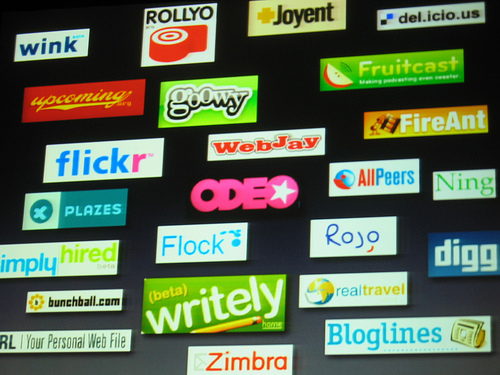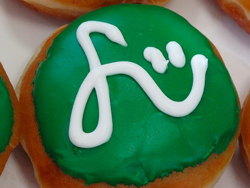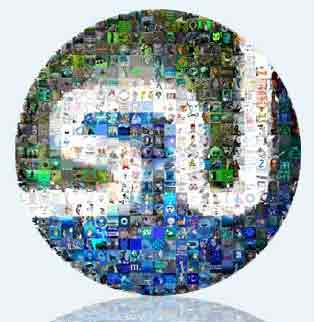
I’m a 16-year-old teen and I’m no different from any of my fellow friends who are also hooked up to the computer these days just as teens were hooked on watching television just a decade ago. In today’s advanced world, it’s a common sight to see teens surfing the web, chatting with their friends on IMs, watching videos on YouTube, and interacting with their peers on Facebook and MySpace. Teens’ active presence on the World Wide Web plays a significant role in the popularity of a social website. Even though teens are heavily obsessed with social websites such as Facebook, MySpace and YouTube, but there are still some sites out there which are unpopular amongst teens.
Today, I’ll share with you guys 5 social platforms whereby only a small percentage of the total teenage population on the World Wide Web uses the following websites.
Twitter
 Whenever I asked my fellow friends and peers whether they use Twitter or not, some simply shrugged their shoulders, some gave me a puzzled facial expression, and only a few were active on the world’s most popular micro-blogging service. Despite the fact that the Internet has become a necessity in our lives for most teens, however, only 13% of the entire Twitterverse is made of teens between the age 13-17 (http://www.quantcast.com/twitter.com#demographics). There are quite a number of reasons why teens don’t tweet.
Whenever I asked my fellow friends and peers whether they use Twitter or not, some simply shrugged their shoulders, some gave me a puzzled facial expression, and only a few were active on the world’s most popular micro-blogging service. Despite the fact that the Internet has become a necessity in our lives for most teens, however, only 13% of the entire Twitterverse is made of teens between the age 13-17 (http://www.quantcast.com/twitter.com#demographics). There are quite a number of reasons why teens don’t tweet.
Most teens prefer the social networking giant Facebook as compared to Twitter because Facebook offers a wide variety of interesting and social features, therefore making the platform much more interactive. For example, teens are able to interact and communicate with their friends in real-time using its built-in IM, play or even challenge their friends in online games such as Pet Society, Mafia Wars and Restaurant City all in one page. What’s more is that Twitter is a marketing tool used by bloggers, Internet marketers and companies. Being an epicenter of world events too (which is not a big item for kids), its traditional “What are you doing?” system is soon vanishing.
From a teen’s perspective, it’s faster to post a blog about myself on Twitter but I have more time. Why rush it? I can’t sit there and get into a long post on Twitter (due to its 140 characters limit), therefore it’s better for adults who are putting the food on the table as a priority.
As such, teens aren’t the source of Twitter’s exponential growth for the past few years. For an in-depth explanation of why teens don’t tweet, you guys can check out my post on ‘5 Reasons Why Many Kids Don’t Use Twitter‘.
Friendster
 Few years ago, I was on Friendster. Not long after, I abandoned the once most popular social networking king on the World Wide Web. At that time (when I was 12 years old), Friendster was an in-thing in our lives. Teens would upload photos on their profiles and friends would comment on them. However, rumors that the social networking website is dead have become reality as incontrovertible facts of Friendster’s death are getting more prominent. Its Alexa rank has fallen drastically from #30 in early 2008 to #210 till date. So what cause it to fail?
Few years ago, I was on Friendster. Not long after, I abandoned the once most popular social networking king on the World Wide Web. At that time (when I was 12 years old), Friendster was an in-thing in our lives. Teens would upload photos on their profiles and friends would comment on them. However, rumors that the social networking website is dead have become reality as incontrovertible facts of Friendster’s death are getting more prominent. Its Alexa rank has fallen drastically from #30 in early 2008 to #210 till date. So what cause it to fail?
Unfortunately, the number of teens on Friendster is decreasing rapidly because the folks there weren’t able to keep with the pace of technology and the insatiable thirst of young people to get something new. Among these technology and features that were not utilized are texting, mini games, micro-blogging and importation of blogs, auto contact generation, visual text confirmation for security, and a lot more. More importantly, it failed to catch the attention of youth who are the major driving force of the Internet market. This is when Facebook took the opportunity to develop social features to garner youth to join its platform. The website started to ‘boom’ and in a short span of time; it has emerged from a Harvard University start-up to one of teens’ most popular online hangouts.
LinkedIn
 Since LinkedIn is a business-orientated website, it’s pretty obvious that there are practically no teens on the social networking platform which is mainly used for professional networking between adults. Even though I’m a blogger and LinkedIn can help me improve my social status on the Internet, but I won’t use it because I am not in a rush to find jobs, people and business opportunities recommended by my adult friends. That’s why it’s indeed a ‘useless’ social website for teens. No one in my school has actually heard of LinkedIn before…except for some tech-savvy students.
Since LinkedIn is a business-orientated website, it’s pretty obvious that there are practically no teens on the social networking platform which is mainly used for professional networking between adults. Even though I’m a blogger and LinkedIn can help me improve my social status on the Internet, but I won’t use it because I am not in a rush to find jobs, people and business opportunities recommended by my adult friends. That’s why it’s indeed a ‘useless’ social website for teens. No one in my school has actually heard of LinkedIn before…except for some tech-savvy students.
As of July 2009, it had more than 43 million registered users, spanning 170 industries. According to Quantcast, the 35-49 age group dominates the website (48%) with the 50+ age group coming in second (28%).
StumbleUpon
 To my dismay, StumbleUpon has an aging population whereby 33% and 31% of the entire user-base is from the 35-49 and 50+ age groups respectively. Not surprisingly, StumbleUpon is also another social website whereby the number of active teens on the website is relatively low, even much lower than micro-blogging service — Twitter, in terms of percentage.
To my dismay, StumbleUpon has an aging population whereby 33% and 31% of the entire user-base is from the 35-49 and 50+ age groups respectively. Not surprisingly, StumbleUpon is also another social website whereby the number of active teens on the website is relatively low, even much lower than micro-blogging service — Twitter, in terms of percentage.
Teens are like in ‘cemetries’ when it comes to social bookmarking websites. They don’t wish to fork out a portion of their precious time to become a member of the community and help to store, organize, search, and manage bookmarks of web pages on the Internet. What they want is a personal virtual space just like having a private and secure profile on Facebook whereby they can interact with their friends after a long and tired day at school.
Digg, StumbleUpon, Mixx and Yahoo Buzz are mainly used by bloggers or those who are news-savvy (love keeping updated to the latest news and happenings in the world). Frankly speaking, most teens don’t really bother much about what’s happening in both the World Wide Web and the physical world. For example, when I asked my friends if they knew anything about the recent Iran election or the death of Ted Kennedy, they will pester me to switch to another topic (either gaming or Facebook) instead. No wonder they aren’t active on any social bookmarking websites at all!
Flickr
 Flickr is the world’s most poplar photo-sharing platform which claims to host more than 3.6 billion images as of June 2009. I personally find Flickr as one of the best creations ever, especially its impressive tagging and search features. For every photo submitted, users can organize using tags, which allow searchers to find images related to particular topics, such as place names or subject matter. It was also an early website to implement tag clouds, which provide access to images tagged with the most popular keywords. Because of its support for tags, Flickr has been cited as a prime example of effective use of folksonomy.
Flickr is the world’s most poplar photo-sharing platform which claims to host more than 3.6 billion images as of June 2009. I personally find Flickr as one of the best creations ever, especially its impressive tagging and search features. For every photo submitted, users can organize using tags, which allow searchers to find images related to particular topics, such as place names or subject matter. It was also an early website to implement tag clouds, which provide access to images tagged with the most popular keywords. Because of its support for tags, Flickr has been cited as a prime example of effective use of folksonomy.
Despite Flickr’s attractive features and teens craving for photos (especially those featuring themselves with their friends or family members), but it’s quite rare to see teens on the Yahoo subsidiary. Why? Well, in addition to being a popular website for users to share personal photographs, the service is widely used by bloggers and professional photographers as a photo repository. What teens want or need is just a simple service that allows them to upload and share personal photos with their fellow friends. That’s all. However, Flickr is way too complicated for them. Facebook is definitely the most suitable alternative.
For example, Flickr offers users the ability to either release their images under certain common usage licenses or label them as “all rights reserved”. The licensing options primarily include the Creative Commons 2.0 attribution-based and minor content-control licenses – although jurisdiction and version-specific licenses cannot be selected. As with “tags”, the site allows easy searching of only those images that fall under a specific license. Since teens tend to publish their personal photos with their friends rather than snapping a photograph of Singapore’s city skyline and turning it to a HDR, of course there isn’t a need to have photos placed under the Creative Commons licenses.